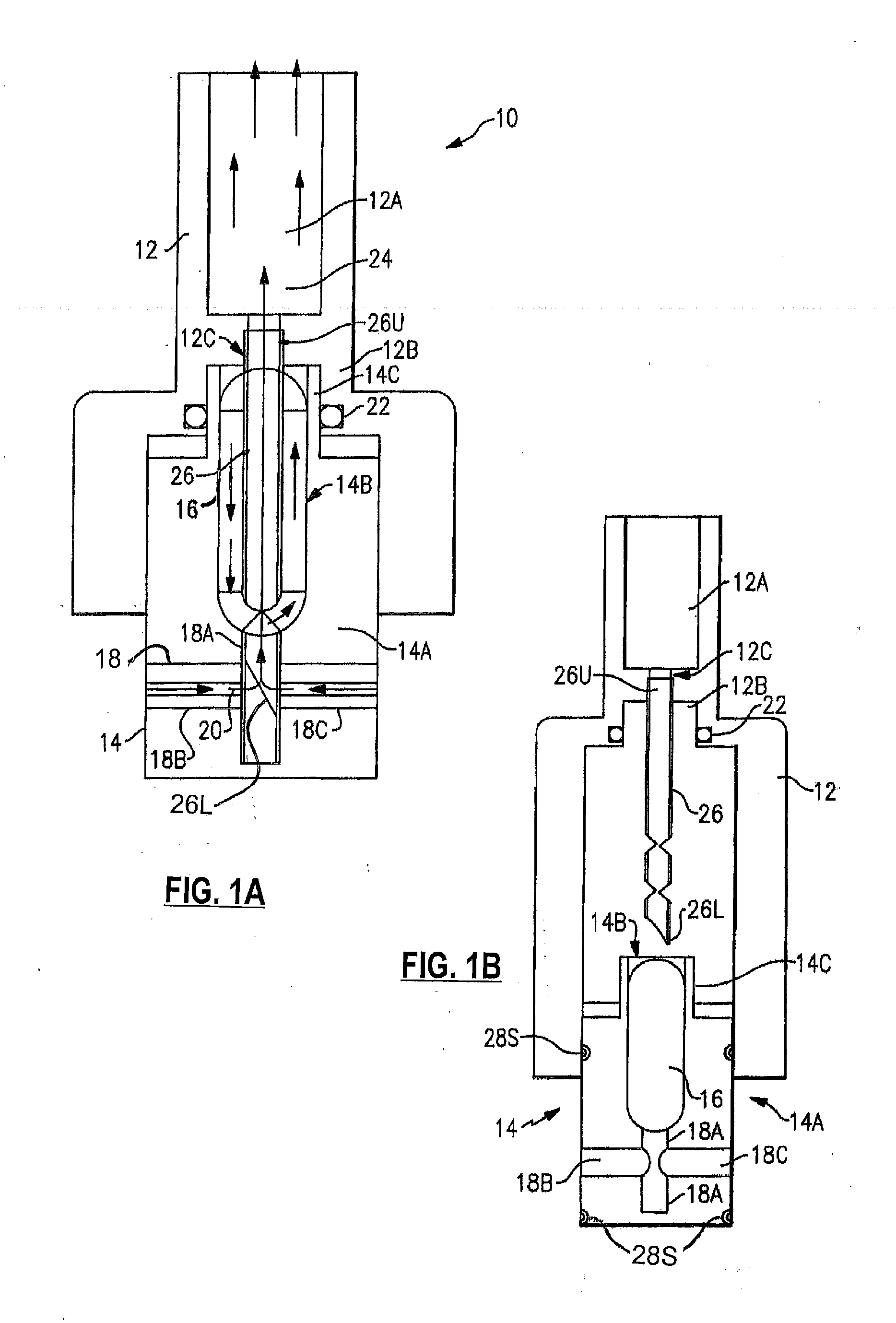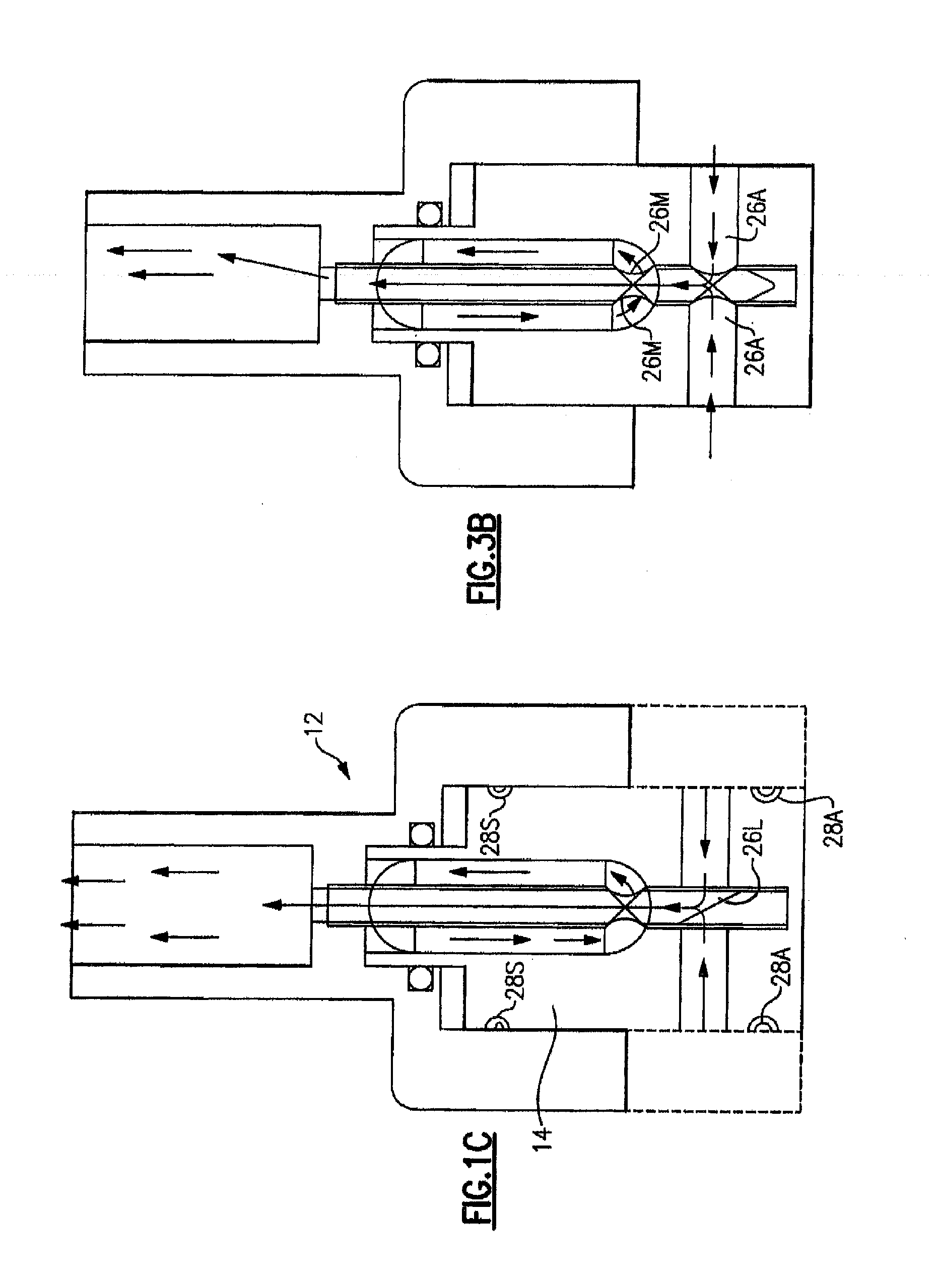Medication inhaler for dispensing multiple capsules
a technology of inhaler and medication, which is applied in the field of inhaler, can solve the problems of difficult sealing, additional difficulties, and difficulty in opening seals, and achieve the effect of facilitating the passage of medication and minimizing any radial movemen
- Summary
- Abstract
- Description
- Claims
- Application Information
AI Technical Summary
Benefits of technology
Problems solved by technology
Method used
Image
Examples
Embodiment Construction
[0060]A. General Description of a Dry Medication Inhaler
[0061]Referring to FIG. 1A, therein is shown a diagrammatic representation of a dry medication inhaler 10 of the present invention wherein, as in all of the following figures unless stated otherwise, references to, for example, the “upper” or “lower” portions of an element will refer to the relative location and orientation of the elements in the Figures.
[0062]As represented FIG. 1A, a dry medication inhaler 10 includes a mouthpiece 12 and a body 14 enclosing a medication container 16. In a typical embodiment, mouthpiece 12 and body 14 may have, for example, generally cylindrical or oval external cross sections and the exterior cross section of the upper portion of mouthpiece 12 may be further shaped into, for example, a cross section that can be comfortably received into a patient's mouth.
[0063]Referring first to body 14, body 14 generally forms a structure for enclosing a medication container 16 and, as shown in FIG. 1A, typi...
PUM
 Login to View More
Login to View More Abstract
Description
Claims
Application Information
 Login to View More
Login to View More - R&D
- Intellectual Property
- Life Sciences
- Materials
- Tech Scout
- Unparalleled Data Quality
- Higher Quality Content
- 60% Fewer Hallucinations
Browse by: Latest US Patents, China's latest patents, Technical Efficacy Thesaurus, Application Domain, Technology Topic, Popular Technical Reports.
© 2025 PatSnap. All rights reserved.Legal|Privacy policy|Modern Slavery Act Transparency Statement|Sitemap|About US| Contact US: help@patsnap.com



